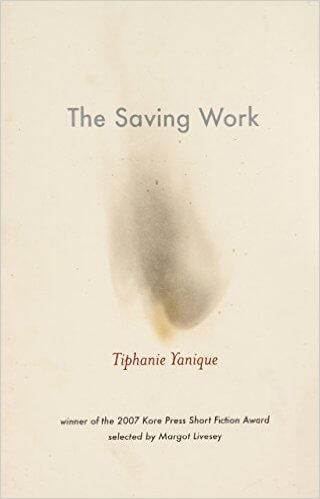Virgin Islander Tiphanie Yanique published The Saving Work in 2007. This chapbook tells the story of the life of two families in the Virgin Islands.
Tiphanie Yanique is a young writer and poet who hails from the United States Virgin Islands (USVI). She wrote the chapbook The Saving Work and published it in 2007 with Kore Press Inc. Although The Saving Work is under twenty pages, the story keeps the reader drawn to it with its twists and the eventual climax. Yanique has been published in several writing journals and since publishing this chap book, she has published her first novel.
Tiphanie Yanique is Versed in Creative Writing
Tiphanie Yanique is a young writer and poet who hails from the United States Virgin Islands (USVI). She wrote the chapbook The Saving Work and published it in 2007 with Kore Press Inc. Although The Saving Work is under twenty pages, the story keeps the reader drawn to it with its twists and the eventual climax. Yanique has been published in several writing journals and since publishing this chap book, she has published her first novel.
Tiphanie Yanique is Versed in Creative Writing
Tiphanie Yanique writes fiction and poetry. I first met her at an open mic in 2007 held by the Rock Collective in St. Thomas, USVI where she shared very inspiring poetry. She is currently an assistant professor who teaches creative writing courses at Drew University. Yanique has won several prestigious awards for her writing including the 2007 Kore Press Short Fiction Award, the Boston Review Fiction Prize in 2007 and the Pushcart Prize in 2007. She was also recently listed in the The National Book Foundation's"5 Under 35" Fiction, 2010.
According to the 'About the Author' section in The Saving Work, her work has been published in Callaloo , The London Magazine, the Cream City Review and many other publications. In 2010, Yanique published her first novel, How to Escape from a Leper Colony: A Novella and Stories.
The Saving Work Tells a Virgin Islands' Story
According to the 'About the Author' section in The Saving Work, her work has been published in Callaloo , The London Magazine, the Cream City Review and many other publications. In 2010, Yanique published her first novel, How to Escape from a Leper Colony: A Novella and Stories.
The Saving Work Tells a Virgin Islands' Story
In six short chapters, The Saving Work tells the story of two families in St. Thomas, USVI. The story starts "A church is burning down." The two women who witness the burning church are both white American women, Diedre Thompson and Violet de Flaubert. They migrated to St. Thomas and married local black men and became a part of the community, especially in the church. Unfortunately, both women could not get along and as the story continues as the writer discusses a friendship between Diedre's son, Thomas and Violet's daughter, Jasmine.
Religion is a Central Theme in The Saving Work
Religion is a Central Theme in The Saving Work
Religion stands as an underlying theme of The Saving Work. With both Diedre and Violet being heavily involved in the church, they raised their children to have strong faith in religion. This faith impacts the decisions that all the characters make in the story - the sexual choices, marriage and passing judgment. Of course the reminder of the burning church also falls within the religious theme.


The Saving Work is a Great Piece of Creative Writing
As the story continues, the relationship between Thomas and Jasmine becomes complicated and the story gets more intense. As the writer delves into the complexities of the de Flaubert and Thompson families, the images of the burning church is replayed. The Saving Work speaks of love, shame, the want of prestige and of the way families communicate. While the ending can be considered sad, the twists in the story and the imagery keep the reader enthused. Just as the story begins with the burning church, the true reason why the church is burning is revealed in chapter six.
Tiphanie Yanique, the author of The Saving Work and How to Escape from a Leper Colony, has had her work published in several publications. The winner of the Tufts University Africana Prize for Creativity, Yanique's poetry and creative writing continue to be recognized and are inspiring readers worldwide.
Tiphanie Yanique, the author of The Saving Work and How to Escape from a Leper Colony, has had her work published in several publications. The winner of the Tufts University Africana Prize for Creativity, Yanique's poetry and creative writing continue to be recognized and are inspiring readers worldwide.










